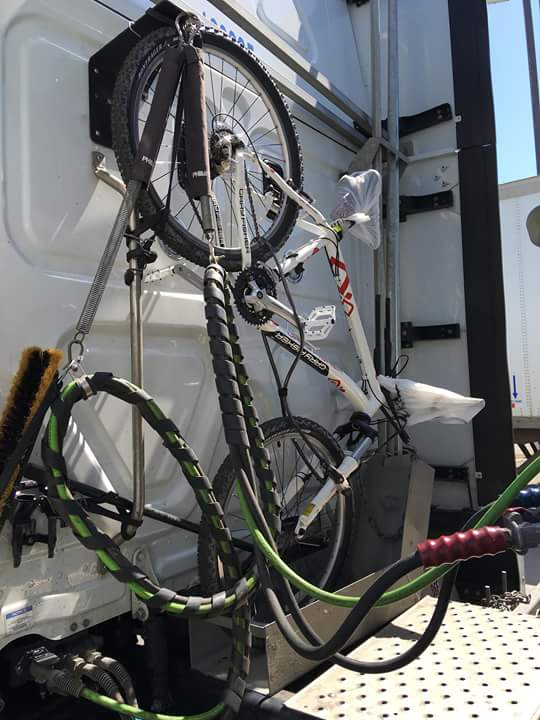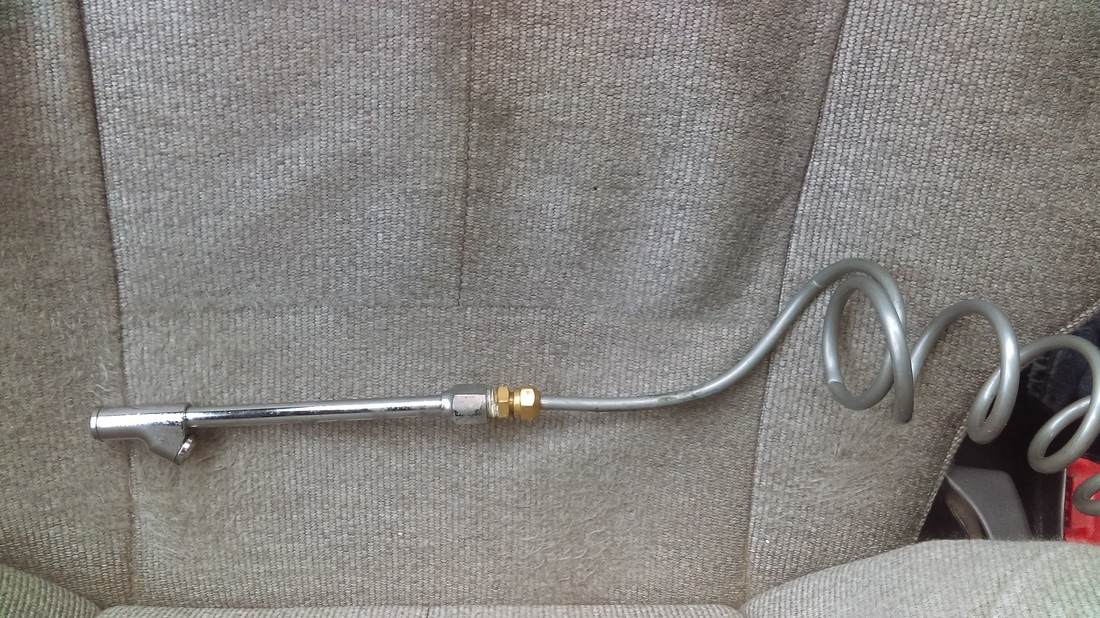Semi Tourism for ----- Stinking Geniuses
Most truckers are pretty damn smart, a fact lost on the general public because who wants to stand downwind of a trucker, if you get my drift. But an awful lot of us are also corpulent, and some of us are morbidly obese. Who cares. Go somewhere else for weight loss advice.* The only thing I’m advocating is to get out of your truck and see America. (Side effects may include nausea, but that usually goes away once you’ve cleared the stench coming from the parking lot.)
So, here are the essentials:
1. A truck. If you don’t have access to a truck, an RV might do in a pinch.
2. A bike (or a trailer full of money for cab fares). If you are serious about seeing
America a bicycle is the only effective transportation for a trucker. There are
two common storage options: a) behind the tractor. Remember to secure it to DOT
standards (your bike chain and a few bungies should be just fine). This is the
easiest, and quickest method, but the weather and road grime (salt especially)
is harsh on the bike. I use a platoon system: a good bike for summer, and a
cheap bike for winter; b) the recommended method by a whopping 94.67% of drivers* is to store your bike inside the cab. Heft it onto the top bunk, toss it onto the bottom bunk, stand it at the foot of the lower bunk, strap it close to the passenger seat, remove the passenger seat, etc. See storage pictures below.
3. Cross-country skis. (Optional.) XC skis are pretty handy for beating back cabin fever.
Snow has the power to transform ho hum into beautiful. Unspectacular
biking destinations, for instance, can be pretty amazing when blanketed with
snow. Also, you don’t need nearly as much acreage for a decent adventure. Some
of the same bike paths/trails make fine XC ski trails; Pole mountain, Wyoming
and Chemult, Oregon are two prime examples.
4. A camera. Technically not essential, but having one often generates an itch
to put it to use.
5. A computer*** to pull up www.semitourist.com, naturally. How to use this site: I have
made the site pretty redundant. You can look for things to do by state,
by map (either the Google map, or state maps), or by highway. The
highway format lists the exits in the order you would see them driving past
(except where I entered them dyslexically, which I may, or may not have fixed).
Entries vary from true destinations, such as Moab, Utah, to glorified rest
areas, such as exit 52, Nebraska. Most entries lie somewhere between those
extremes. The few places that lack “B,” or “MB” abbreviations don’t require a
bike to get to their destinations. All others do.
6. Plan ahead, but be flexible. Look over your route early enough to be aware of
possibilities. Mentally, it’s pretty hard not to keep pushing on, so it helps
enormously to be looking forward to a particular destination. Don’t forget that
you have three hours of screw off time before you start eating into your driving
time. When I’m under a tight schedule I still can usually get a solid hour of
playtime in, eat, and take care of the three Ss.’
7. Explore strange civilizations: take the bus (or train). Use Google Maps to find the
nearest bus/train stops into the major cities. A lot of buses/trains allow bikes
too, so do a little public transportation research.
8. That’s it.
* But, if you’re really interested, I lost 30 plus pounds immediately after we
quit team driving (it was nice to see my wife again). And bicycling toned up
some of the remaining flab.
** A completely fabricated statistic pulled from my...nevermind. It's probably
fairly accurate though.
*** Or now days there are contraptions called cell phones, also internet capable.
Slight Revisions:
1. I changed my mind: there’s some weight loss advice on the next page,
Weight Loss for Stinking Geniuses.
2. RE: Point 6. Our company has changed its business model to shorter, regional runs.
I still get out, but I don’t have a pattern yet.
Various Storage Options







